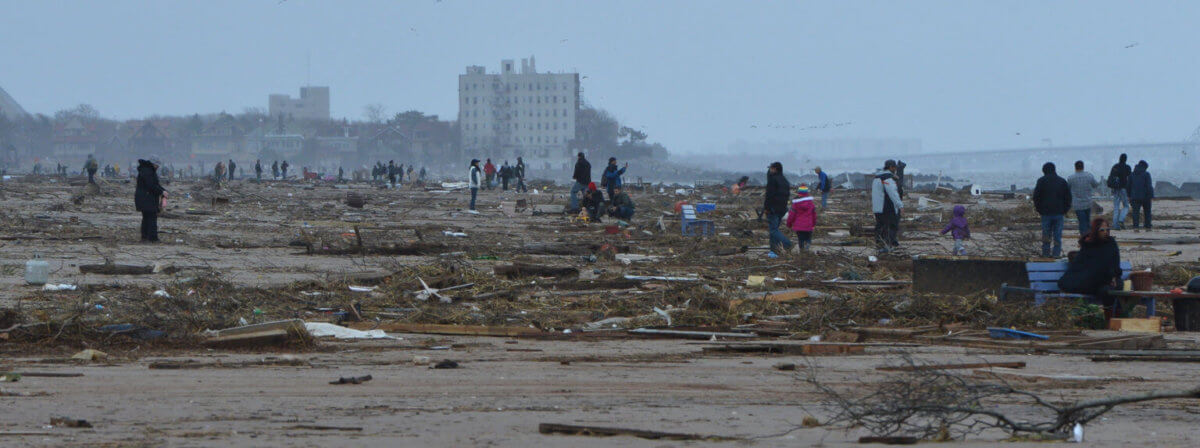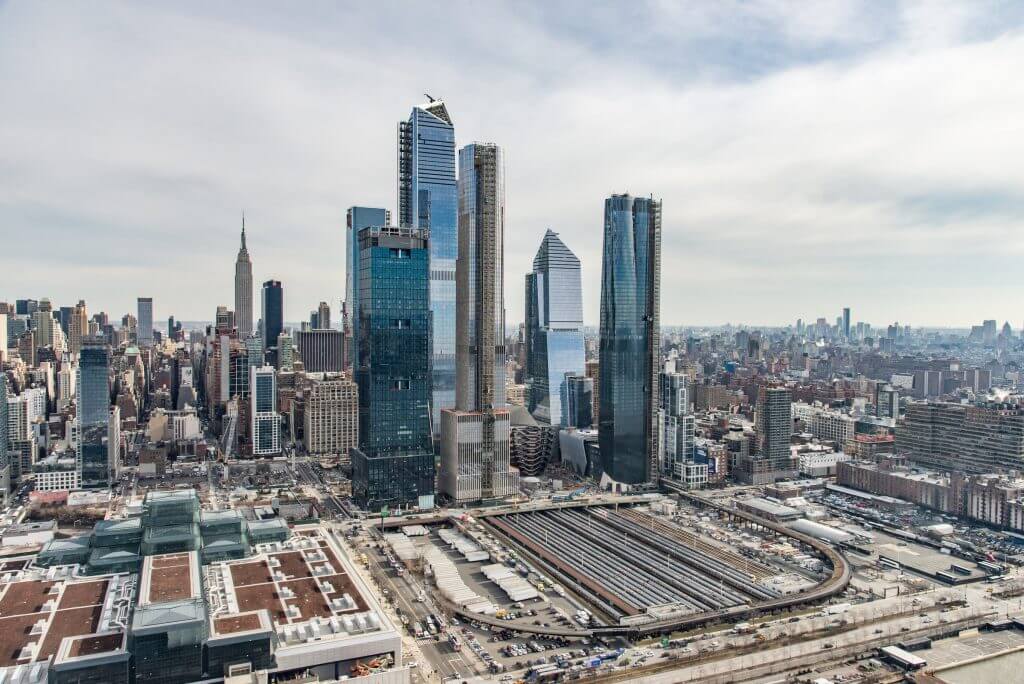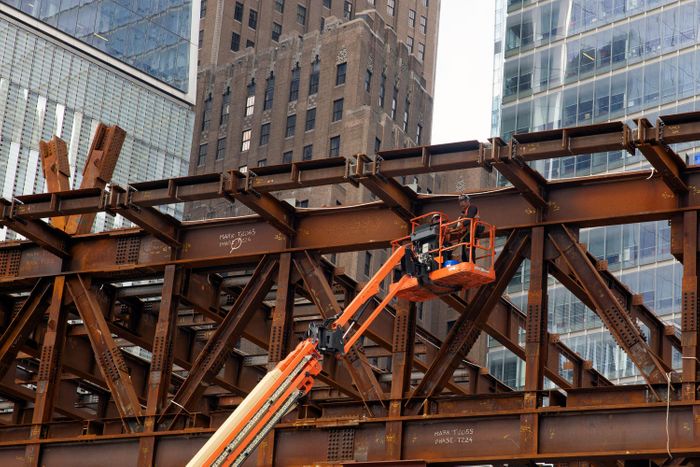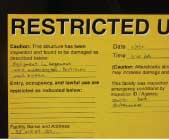Hundreds of New Yorkers showed up to a virtual meeting held by the Department of Buildings (DOB) on Monday urging the agency to strengthen its proposed emissions rules for the landmark climate legislation Local Law 97.
DOB last month released its proposed rules for Local Law 97 of 2019, which requires all buildings in the city over 25,000 square feet to meet tough new limits on carbon emissions by 2024, and for landlords to retrofit their buildings in order to meet those mandates. Considered one of the most ambitious local climate laws on earth, owners of large buildings must drop their emissions at least 40% by 2030 to comply.
Most of the dense, wonky rules concern such minutiae as formulas for calculating a building’s greenhouse gas emissions limits and energy usage, but climate advocates have sounded the alarm over one provision that they argue would torpedo the spirit of the law.
That provision, as written, placed no limits on the number of “renewable energy credits” (RECs) landlords can buy to offset the carbon emissions generated from utility-supplied electricity. In effect, advocates argue that would undermine the entire law and allow big landlords to essentially buy their way out of decarbonizing their buildings.
“As proposed in these rules, an electrical-only REC limit guts the law. It would cost New Yorkers tens of thousands of jobs and air pollution reductions, including many good, future union jobs,” said Pete Sikora, climate campaign director at New York Communities for Change, in testimony to DOB on Monday. “The clear intention of Local Law 97’s prime sponsor and drafters was to ensure that RECs would only be used in a limited manner, not to undercut the entire law and therefore New York City’s drive to create jobs and slash pollution.”
The Urban Green Council estimates that if RECs aren’t limited further, then city landlords could purchase offsets on behalf of 50% of expected carbon emissions over 2030 limits, rather than actually reducing emissions. Broken down, that includes 40% of emissions from multifamily properties and a whopping 85% from office buildings.

“The proposed REC rule is lax and totally inadequate,” Sikora continued. “It opens up a massive corporate ‘buy-out’ loophole in the law that would cost tens of thousands of jobs and massive pollution cuts. That would be a disaster.”
To close the loophole, Sikora and other advocates say that the city should amend the rules to limit REC purchases to offsetting only 30% of emissions over a given building’s cap, which they say would more effectively allow the city to limit emissions from big buildings in the law’s spirit. The call has been joined by 26 councilmembers and City Comptroller Brad Lander.
“While Renewable Energy Credits provide a funding stream to decarbonize the grid, allowing too many credits would expand pay to pollute loopholes and undermine the law,” Lander wrote on Twitter, citing a report from his office finding that not capping RECs would substantially limit the amount of emissions reduced by large buildings.
The law, passed in 2019, included RECs as a legal requirement for the program within its text, noted DOB’s Deputy Commissioner for Sustainability, Laura Popa, in closing remarks to the hourslong hearing — but the agency still plans to issue further rules placing greater limitations on the use of RECs before any final regulations are approved.
“The use of RECs is a requirement of the law, and it’s not restricted in the law,” Popa said. “Despite that, we are studying the RECs issue with our government stakeholders. We’re gonna be proposing appropriate limitations in the future and determining the appropriate legal mechanism to make that happen.”
A significant majority of testimony was made on behalf of stricter limits on emissions, but a few institutional players pressed the agency on potential carveouts to dull the financial impact the law is expected to have on landlords and the fossil fuel industry.
The Real Estate Board of New York, for instance, criticized what it said was the DOB rules’ limitations on allowable emissions beyond what is prescribed in the law, and bemoaned the fact that RECs are limited only to emissions generated for electricity; those generated for heat were not included.
“The effect of the proposed rule is to make compliance more difficult for building owners at a time when the inflation is raising the costs of projects, interest rate hikes are making securing financing more challenging, and the city’s economy has yet to fully rebound from the COVID-19 pandemic,” said Zachary Steinberg, REBNY’s senior vice president of policy, in prepared remarks.
Gas company National Grid, meanwhile, argues that decarbonization efforts should utilize what it deems as “renewable natural gas.”
“Because many buildings are difficult to electrify, we are proposing a hybrid approach to decarbonize heat that would replace fossil gas with renewable natural gas and green hydrogen for use in existing gas distribution networks,” said Donald Chahbazpour, National Grid’s policy director. “These fossil free fuels are important complements to other renewable energy solutions that ensure reliable and affordable service for New York City families and businesses year-round, regardless of the weather, while still reducing emissions dramatically.”
So-called renewable natural gas is essentially methane captured from landfills, sewage treatment plants, or agricultural runoff. Burning methane for fuel is much less harmful to the environment than allowing it to waft in the air, where it is significantly more harmful than carbon dioxide.
But environmental advocates argue that there is simply not enough of it to be a scalable solution to the climate crisis.






































